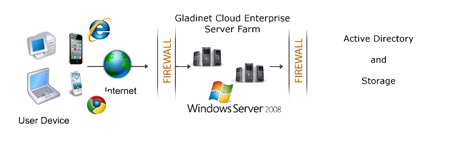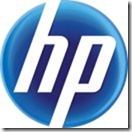Give User Home Directory a Dropbox-Like Access
In a recent Gladinet Cloud Enterprise trial, a customer tells us their story and why they are looking for a solution like Gladinet Cloud Enterprise.
However, in the past week, there were already 3 cases that the user’s PC broke down and together, took away the data stored on it.
They have to find a solution that is similar to Dropbox but allowing them to have full control of the data.
The company already standardized on Microsoft technologies such as Active Directory and File Server, with each user assigned a home directory from the file server. There may be VPNs in between the main office and the remote office. But again, if users are so used to save documents to My Documents folder, not even bother to save to the remote office’s local file server, How easy will it be asking the users to connect the VPN, map a drive to active directory home directory and save documents there? The usability barrier is just too high.
Ideally, they want to find a solution, that can turn the remote user’s My Documents folder into an enterprise drop box, synchronize the local documents directly into the company’s file server, inside each user’s Active Directory home directory.
There are many hurdles Gladinet Cloud Enterprise overcome to make this happen.
First, how to connect the remote offices to the company’s file server without setting up VPN? How to get it done when the only communication channel is HTTPS?
Second, how to monitor the My Documents folder and send the documents to user’s home directory?
Third, how to maintain security and single sign-on so only authorized users can use the solution?
Forth, how to link the user’s storage with user’s Active Directory home directory?
a. the access clients on user’s desktop and on web browser;
b. the Gladinet access infrastructure that can be installed on-premise;
c. and the ability to connect to enterprise file server as backend cloud storage.

The Remote Site Headache
The customer has multiple sites. For users from the remote sites, they are so used to save documents to the local My Documents folder. Even though there is a file server network share local to the remote site, users are still so used to save documents to My Documents folder.However, in the past week, there were already 3 cases that the user’s PC broke down and together, took away the data stored on it.
The Dropbox Problem
Some users from the remote sites are using Dropbox on their own to solve the data backup problem. However, for the company, Dropbox is both a solution and a problem. The company simply can’t allow users to sync files anywhere because they need to meet certain data compliance criteria.They have to find a solution that is similar to Dropbox but allowing them to have full control of the data.
The company already standardized on Microsoft technologies such as Active Directory and File Server, with each user assigned a home directory from the file server. There may be VPNs in between the main office and the remote office. But again, if users are so used to save documents to My Documents folder, not even bother to save to the remote office’s local file server, How easy will it be asking the users to connect the VPN, map a drive to active directory home directory and save documents there? The usability barrier is just too high.
Ideally, they want to find a solution, that can turn the remote user’s My Documents folder into an enterprise drop box, synchronize the local documents directly into the company’s file server, inside each user’s Active Directory home directory.
The Enterprise Solution
Sounds good? Yes, that is Gladinet Cloud Enterprise.There are many hurdles Gladinet Cloud Enterprise overcome to make this happen.
First, how to connect the remote offices to the company’s file server without setting up VPN? How to get it done when the only communication channel is HTTPS?
Second, how to monitor the My Documents folder and send the documents to user’s home directory?
Third, how to maintain security and single sign-on so only authorized users can use the solution?
Forth, how to link the user’s storage with user’s Active Directory home directory?
How it is Done?
Gladinet Cloud Enterprise solves the problem by creating a 3-tier architecture,a. the access clients on user’s desktop and on web browser;
b. the Gladinet access infrastructure that can be installed on-premise;
c. and the ability to connect to enterprise file server as backend cloud storage.




Comments